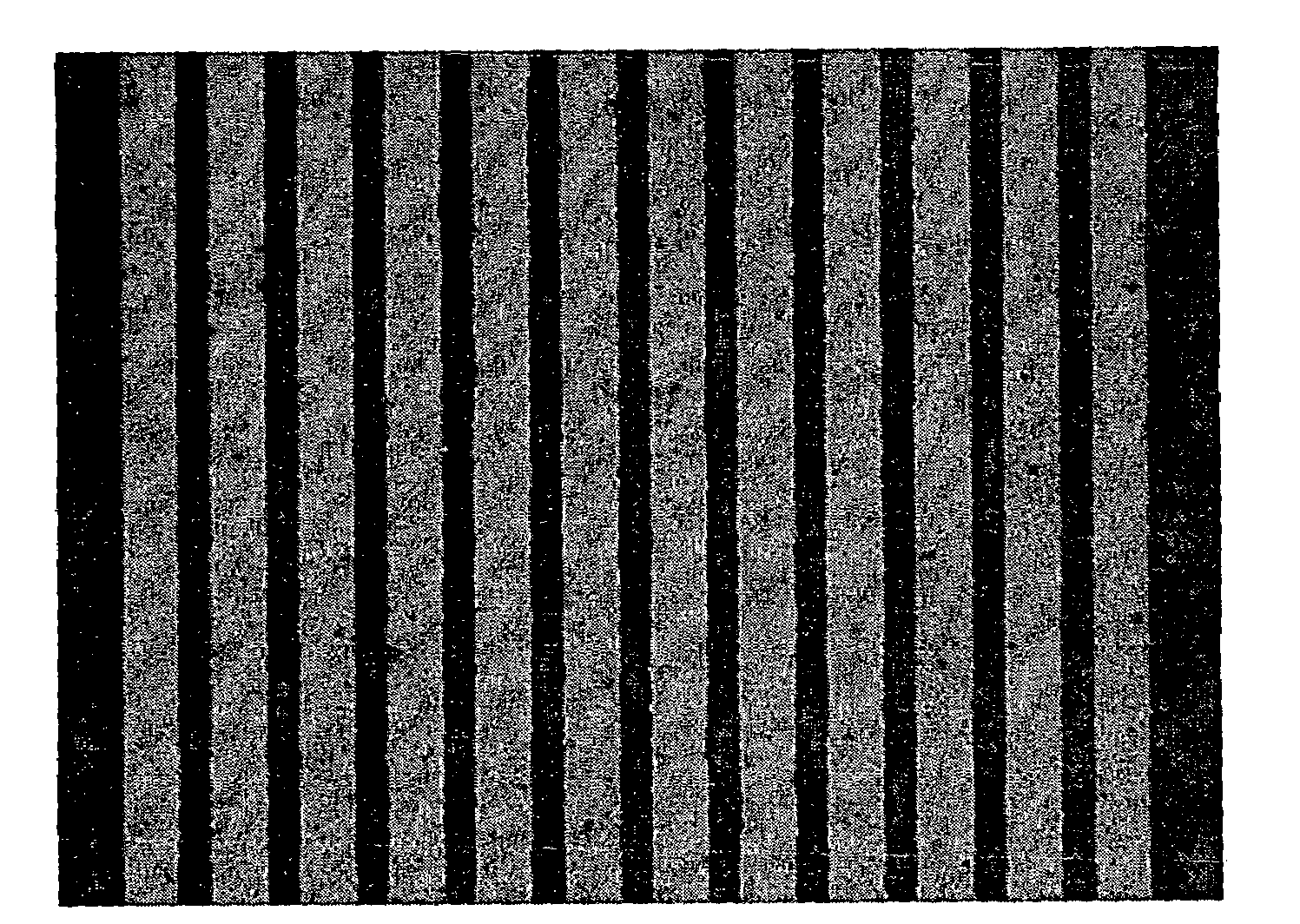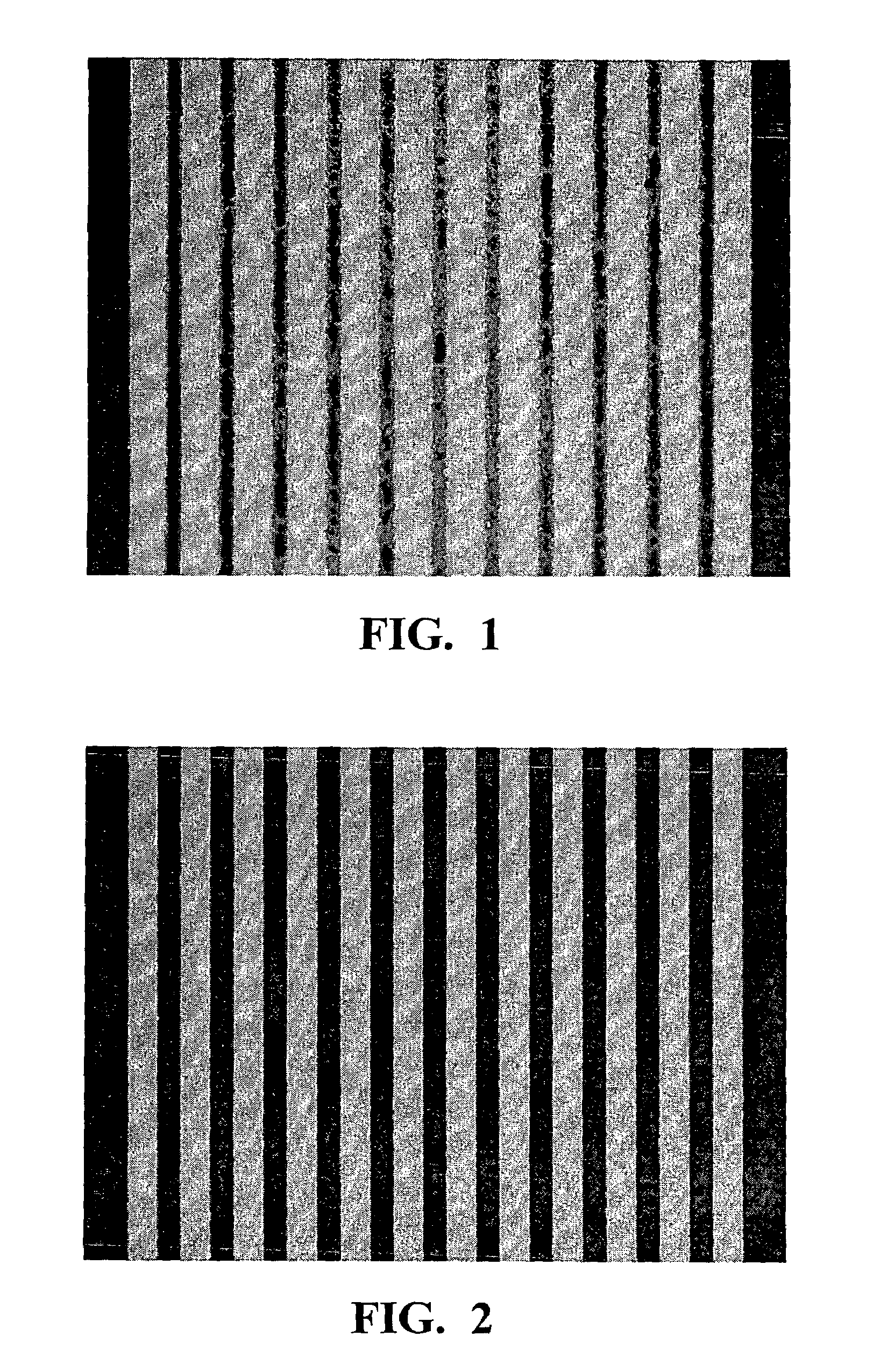Photosensitive conductive paste for electrode formation and electrode
a technology of photosensitive conductive paste and electrode formation, which is applied in the direction of photomechanical equipment, connection contact material, instruments, etc., can solve the problems of low degree of freedom, restrictions on the production process, and uneven width of electrodes
- Summary
- Abstract
- Description
- Claims
- Application Information
AI Technical Summary
Benefits of technology
Problems solved by technology
Method used
Image
Examples
example 1
[0084]8 parts by weight of an organic resin binder capable of being developed with an aqueous alkaline solution (copolymer of methyl methacrylate and methacrylic acid, acid value: 120 mgKOH / g, weight average molecular weight: 6400), 1.2 parts by weight of a photoinitiator (1:1 mixture of 2-methyl-1-[4-(methylthio)phenyl]-2-morpholinopropan-1-one and ethyl-4-dimethylaminobenzoate), 0.5 parts by weight of a photosensitizer (2,4-diethylthioxanthone), 0.3 parts by weight of a thickener (copolymer of polyvinyl pyrrolidone and vinyl acetate), and 0.02 parts by weight of a thermal polymerization inhibitor (1,4,4-trimethyl-2,3-diazobicyclo[3.2.2]non-2-ene-N,N′-dioxide) were dissolved in 16 parts by weight of an organic medium (texanol). 6 parts by weight of a reactive monomer (trimethylol propane triacrylate), 0.2 parts by weight of a viscosity stabilizer (malonic acid), 2.2 parts by weight of a glass binder (softening point: 550° C., average particle diameter: 0.8 μm, Bi2O3—SiO2—B2O3) and ...
example 2
[0085]A photosensitive conductive paste for electrode formation was obtained in the same manner as Example 1 with the exception of using Tinuvin® 400 (Ciba®, 2-(2H-benzotriazol-2-yl)-6-(1-methyl-1-phenylethyl)-4-(1,1,3,3-tetramethylbutyl)phenol) for the ultraviolet absorber. This ultraviolet absorber is an ultraviolet absorber which does not substantially change the reflectance of the paste in the visible light range.
example 3
[0096]A photosensitive conductive paste for electrode formation was obtained in the same manner as Example 1 with the exception of changing the amount of ultraviolet absorber (Tinuvin® 109, Ciba®) to 0.5 parts by weight.
PUM
| Property | Measurement | Unit |
|---|---|---|
| reflectance | aaaaa | aaaaa |
| reflectance | aaaaa | aaaaa |
| boiling point | aaaaa | aaaaa |
Abstract
Description
Claims
Application Information
 Login to View More
Login to View More - R&D
- Intellectual Property
- Life Sciences
- Materials
- Tech Scout
- Unparalleled Data Quality
- Higher Quality Content
- 60% Fewer Hallucinations
Browse by: Latest US Patents, China's latest patents, Technical Efficacy Thesaurus, Application Domain, Technology Topic, Popular Technical Reports.
© 2025 PatSnap. All rights reserved.Legal|Privacy policy|Modern Slavery Act Transparency Statement|Sitemap|About US| Contact US: help@patsnap.com



